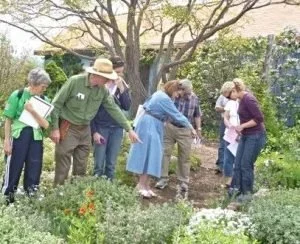From how to grow vegetables to pruning techniques to mulching, these classes can help you avoid common mistakes and improve your gardening success.
Read MoreAfter a long, cold winter, the snow melts, the world turns green, and it's time to plant! It seems all the world is in a rush to get gardening done in spring, but is that really necessary?
Read MoreTo much or not to mulch? Organic or inorganic? How big? How small? All your questions answered!
Read MoreGot a green thumb, but worried about planting during the hotter summer months? We got ya covered.
Read MoreSeems like we were just talking about the last frost date in Colorado , and now we need to be concerned with when our first frost will be. Anyone who has lived in Colorado for any length of time, understands that a dip into freezing temperatures for a night or even two, doesn’t necessarily mean the end of your tender summer vegetable harvest. With proper protection you can easily extend your harvest for a few weeks.
Read MoreThe soil needs to be warm enough to allow the bulbs to establish roots before the ground freezes. The roots will help ensure that the bulbs won’t be pushed out of the ground by the freezing and thawing cycle Planting too early, when the soil is too warm will prompt the bulb to grow top growth, instead of the essential roots. Experts advise that bulbs need to be planted at least six weeks before the ground freezes.
Read MoreWe are weeks away (hopefully) from our first frost of the season, but it isn’t too early to plan, plant, and enjoy vibrant fall colors in your landscape. What are your favorite fall garden plants? Read our blog for more ideas.
Read MoreLate Summer is a great time to plant perennials in Colorado. The soil is warm and the overnight temperatures are beginning to cool off. These two factors, along with adequate soil moisture is the trifecta of establishing perennials in your garden before the first frost.
Read MoreNot only is August time to reap the benefits (also known as tomatoes) of your labor (also known as weeding), but you can still plant something new that you will be able to harvest through October.
Read MoreThe old adage “If you build it, they will come” is as true for hummingbirds as it is for the ghosts of beloved baseball players.
During migration, a hummingbird’s heart beats up to 1,260 times a minute, and its wings flap 15 to 80 times a second! It goes without saying that they need to consume a tremendous amount of calories to complete their long migration journey. If hummingbirds do not visit your garden during their migration or if you only observe hummingbirds in your garden during short periods , it is likely that you aren’t offering them what they need.
This garden is the place to go if you are looking for garden inspiration, want to learn about new plant varieties that perform best in our Colorado climate, or just want to enjoy a beautiful garden where someone else does the planting, weeding, and other garden maintenance tasks.
Read MoreDid you know that there’s a natural antidepressant in soil? It’s true. Mycobacterium vaccae is the substance under study and has indeed been found to mirror the effect on neurons that drugs like Prozac provide. The bacterium is found in soil and may stimulate serotonin production, which makes you relaxed and happier.
Read MoreColorado summers are well-known for being hot and dry, much like Mediterranean summers where Lavender is native. As a result of Colorado’s ideal lavender growing environment and the abundant uses of this versatile herb, Colorado is on the forefront of a budding lavender industry.
Read MoreExperts (mostly) agree that pruning/pinching/training your tomato plants isn’t really necessary, although there may be some benefits that this blog will review. However, before ‘digging in’ to this project, it is essential that you determine if your tomato plant is a determinate type or indeterminate type tomato plant. The growth characteristics of these plants are significantly different.
Read MoreCurrent irrigation technology can sense when it is raining as well as the moisture content of the soil and can automatically skip the irrigation cycle when appropriate. How often have you driven past a commercial or residential landscape whose irrigation system is running during a rainstorm? This massive waste of water is really in-excusable with today’s available technology.
Smart irrigation starts with the landscape design, plant choices, watering schedule, and choice of irrigation method. Below are a few ideas to help ensure efficient irrigation:
Japanese beetles don’t just show up. They invade! What can you do to protect your precious plants?
These metallic green and bronze beetles are happy to dine on dozens of different plants, but they seem to have their favorites, including roses, Virginia creeper and grape vines. And because they forage in such large numbers, it doesn’t take long for them to strip a plant bare.
If you are looking for inspiration, look no further that what catches your eye during your drive to work or an evening stroll around your neighborhood. This year has been a truly remarkable year for flowering trees and shrubs! This is the perfect time of year to ‘borrow’ ideas from your neighbors for your own landscape.
Read MoreThe start of the long July 4th is less than one week away! As you prepared to spend more leisure time outside, take a look at around your garden
Read MoreHave you ever wondered how day length affects plants and why they bloom when they do? The key is a physiological response in plants called Photoperiodism. Simply put, Photoperiodism is the development of plants to the relative lengths of light and dark periods. All plants fall into one of these three photoperiod classifications: short-day plants, long-day plants, and day-neutral plants.
Read MoreCelebrate National Pollinator Week by protecting the hard-working animals that help pollinator 75% of our flowering plants, and nearly 75% of our crops. Often, we may not notice the hummingbirds, bats, bees, butterflies, and flies that carry pollen from one plant to another as they collect nectar.
Read More



















